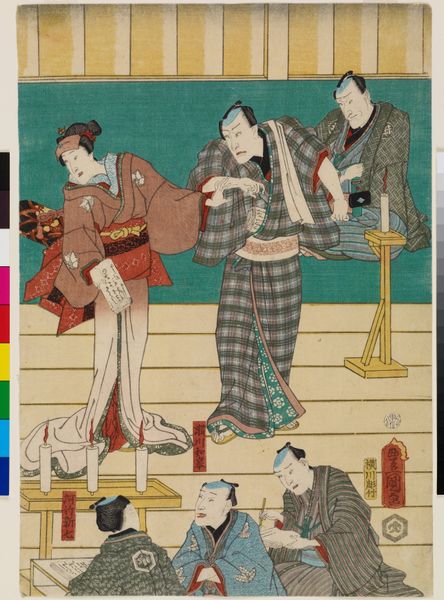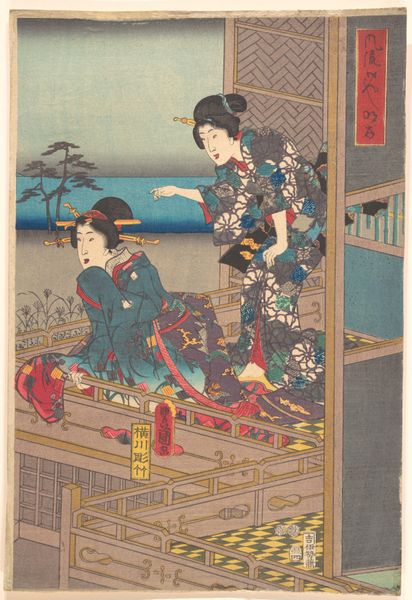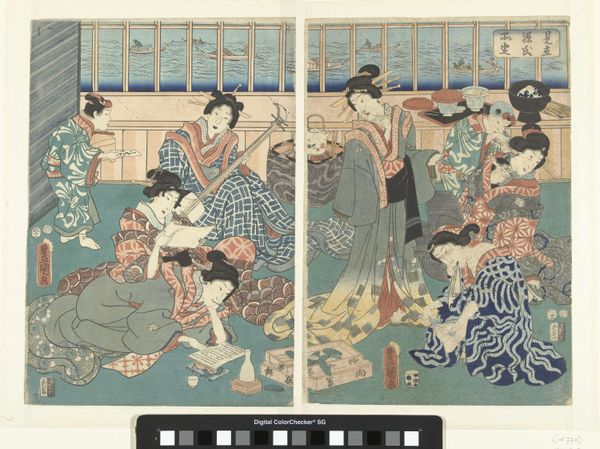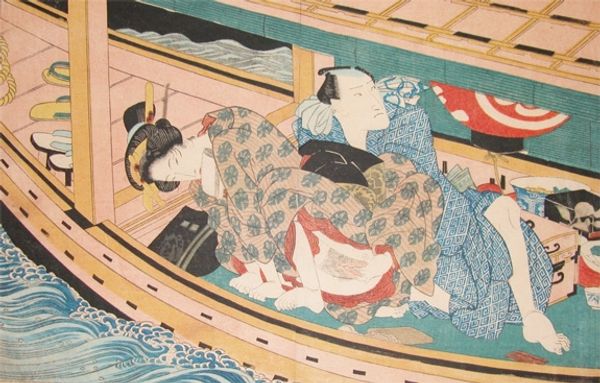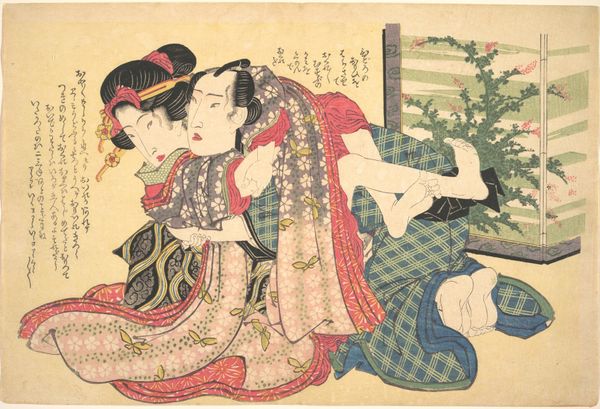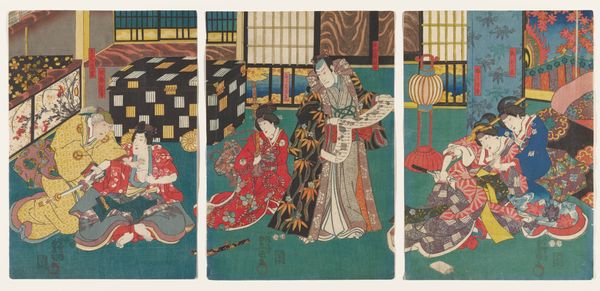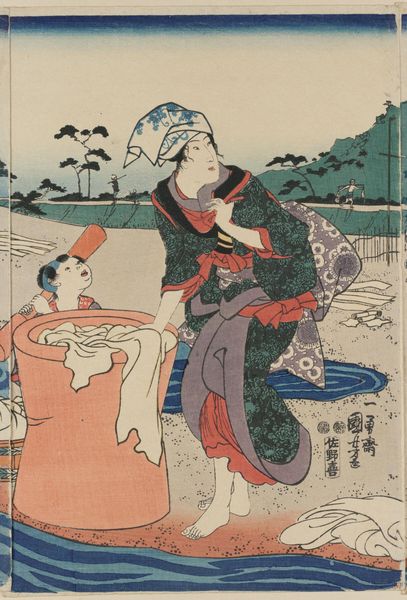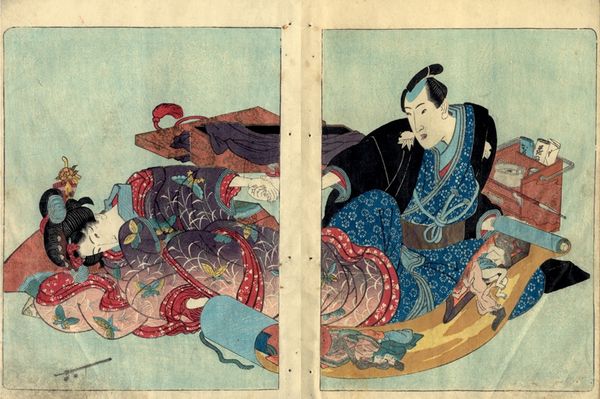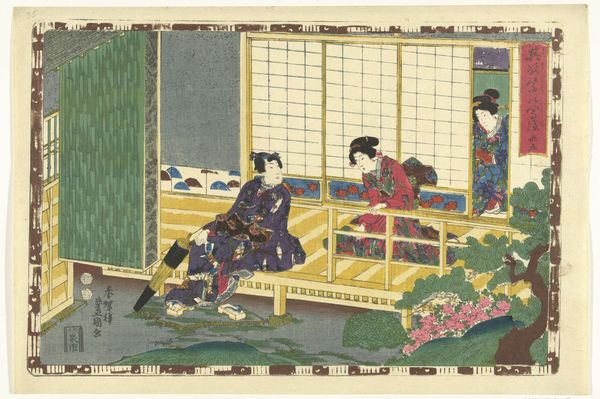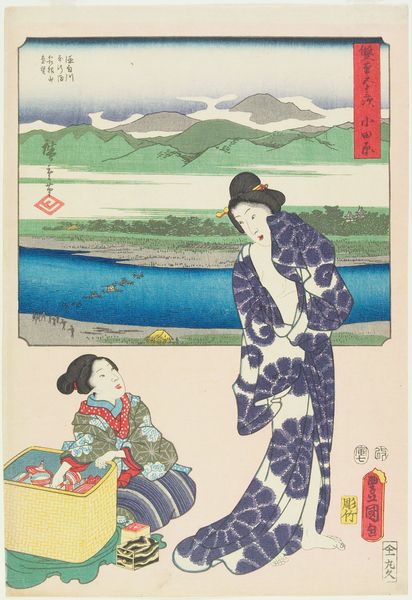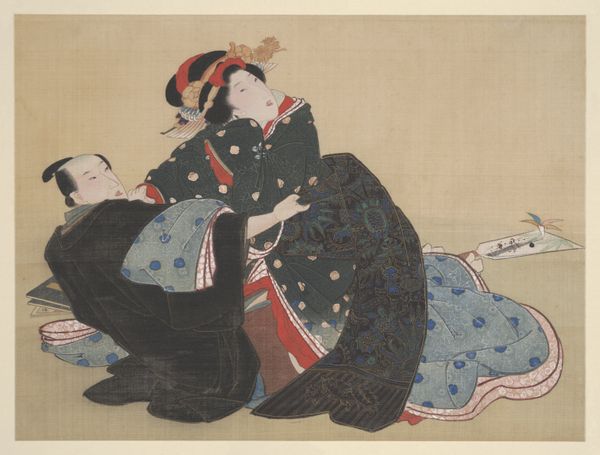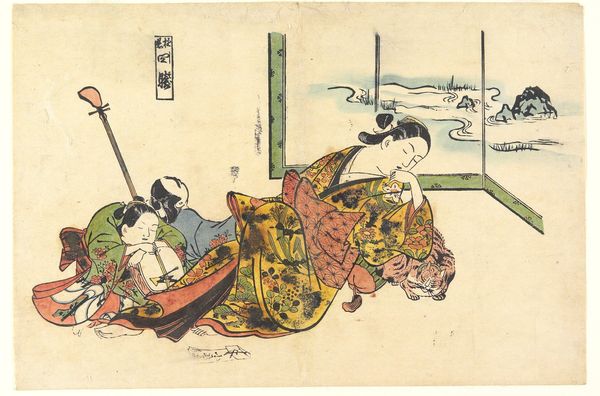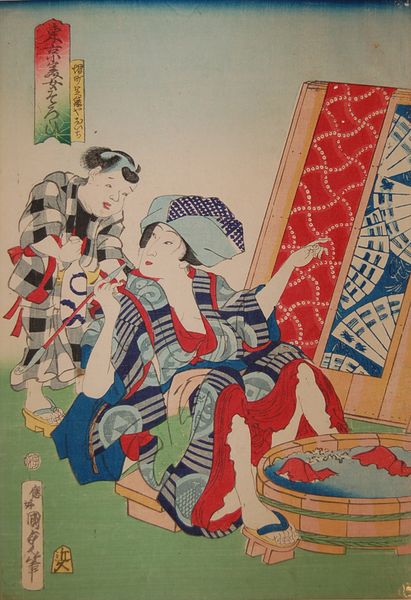
print, ink, woodblock-print
#
narrative-art
# print
#
asian-art
#
ukiyo-e
#
figuration
#
ink
#
woodblock-print
Dimensions: 14 × 18 7/8 in. (35.6 × 48 cm) (image, sheet, vertical ōban diptych)
Copyright: Public Domain
Curator: Immediately striking, isn't it? A theatrical drama unfolds right before our eyes. Editor: It feels incredibly charged; there's such palpable tension. It’s like capturing the apex of a conflict. I'm immediately drawn to their garments, it contrasts a traditional robe pattern and adds visual interest Curator: Precisely. What we’re seeing here is a woodblock print by Toyohara Kunichika, potentially created around 1866. It’s titled "Ichimura Kakitsu I as Chōkichi," depicting the actor Ichimura Kakitsu I in the role of Chōkichi. Kunichika was a significant figure in the ukiyo-e tradition. He pushed its boundaries in interesting ways. The setting seems deliberately spartan – we get water and posts suggesting perhaps a harbour. The overall visual effect enhances the feeling that this dramatic scene is playing out in a world defined by masculine energy and coded performances of selfhood. Editor: I appreciate that tension between realism and theatricality. It's intriguing how Kunichika captures the intensity of the Kabuki performance, yet embeds it in a wider socio-political reality of representation, questioning how images perform specific roles, and for whom. It begs the question, who gets to see themselves as heroic? Are we complicit in consuming harmful portrayals by being an audience to begin with? Curator: A critical point. Prints such as these offer an important window into popular culture during the Edo and Meiji periods. These images were widely circulated and were used as a form of promoting actors but also relaying important and relevant societal messaging and expectation of masculinity. It speaks volumes about the era's values, desires, and the performance of gender and power. Editor: I am seeing it as more than just a "snapshot" of that period in Japan, but rather an engagement with broader issues around visibility, performance and self, questioning what "truth" looks like in representation. Curator: Indeed. Kunichika's work demonstrates the power of images to both reflect and shape cultural values, reminding us that art never exists in a vacuum but in perpetual engagement with its time and beyond. This print is a call to consider not only the depicted scene, but also how it’s deployed within broader narratives and visual strategies around gender and identity. Editor: I walk away thinking that this challenges viewers, and in my case, especially women, to question who creates images and narratives, but even further: what these narratives allow.
Comments
No comments
Be the first to comment and join the conversation on the ultimate creative platform.

